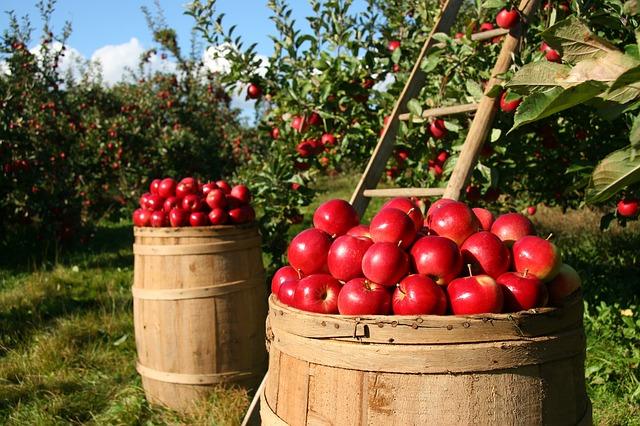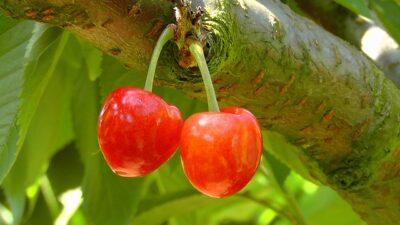Experienced homesteaders know that just because the trees go dormant, the hens take a break from laying, and the garden goes fallow it doesn’t mean that you can go into hibernation from December to March.
Among the many wintertime tasks on the farm, you can’t forget to include tending to your fruit trees. Proper overwintering of fruit trees helps them to survive the cold months and can get rid of any hidden fungal spores, bacteria, and insect eggs that can wreck havoc come summertime. The three simple steps include: insulation, pruning and spraying.
1. Prioritize autumn clean-up. Start winter preparation by cleaning up your orchard during autumn. Remove fallen, rotting fruit from the ground and rake up fallen leaves. This debris can harbor hidden fungal spores, insects and their eggs. Rotting fruit is also an invitation to animal invaders to move in. Be sure also to remove any dead fruit from the tree. After the leaves have fallen, give your fruit trees a thorough inspection for signs of disease or damage. Look for any cracks, discolorations, unusual growths or other signs of damage. Remove or treat any wood that shows signs of disease.
2. Prevent sunscald. Before the cold really sets in is the time to protect your trees from sunscald. Sunscald occurs in the winter when the sunlight heats the bark during the day, waking it from dormancy, and then freezes again at night, causing an open scar. The scar can become an inviting opening for insects and disease. To protect your trees from sunscald you can use a commercial tree wrap — like crinkled paper or spiral plastic wrap — to wrap the trunks of young trees. Older trees can be treated with a 1:1 solution of water and white latex paint.
3. Guard against animal invaders. If you have a busy wildlife presence in your area, you also may need to protect your fruit trees from deer, rabbits, mice and other animals that are looking for an easy wintertime meal.
“The Big Book Of Off The Grid Secrets” — Every Homesteader Needs One! [2]
For trees less than 5-7 years old, use tree wraps or wire mesh to protect trunks from mice and voles, making sure they are partially buried. Though nothing short of an 8-foot fence is guaranteed to keep deer at bay, a barrier of poultry netting or woven wire can help protect your trees. Scent repellants also may work, including liquid repellents like coyote urine or hanging a highly scented bath soap from the tree’s branches.
4. Insulate the roots. When it comes to winter prevention, insulating your roots is the most important task. A nice, thick layer of mulch is the best way to keep roots warm. Mulch should be a few inches thick all year long and even thicker in the winter (4-6 inches for young trees). You can use a variety of organic materials as mulch, including bark mulch, leaves, pine straw, wood chips and straw. Snow works, too! For the very best protection, cover your mulch with an insulated barrier like black landscape fabric or a black trash bag.
5. Prune the trees. Prune from December to February when the trees are dormant. Weak branches are an easy target for bacteria or insects to lay eggs, so weed them out now before it’s too late. First remove those dead, dying or diseased branches you noticed back in the fall. For diseased branches, be sure to cut the next juncture down to be sure of removing all the affected wood. Next, remove branches that are rubbing or at risk of growing into one another, branches that grow straight out, and root suckers. When pruning fruit trees be sure to sterilize your shears between cuts to prevent disease transfer. This can be done by rubbing them with denatured alcohol or a 1:99 solution of bleach and water. Tea tree oil is also a natural choice.
6. Wash the trees. The dormant season is prime time to “wash” fruit trees. Washing, or spraying, is the most successful way to kill off any bacteria, fungal spores, insects or insect larvae that may be hiding in your tree. Spraying should only be done in the winter when trees are deeply dormant, before any new buds have begun to show. Dormant oil sprays are available online or in most gardening and home improvement stores. These usually contain some type copper and/or lime, fish oil, or plant-based oil and can be found in organic forms, as well. Do your spraying when temperatures will be consistently above freezing for a few days. Make sure to wet all surfaces thoroughly, especially bark fissures. Since these sprays work as a contact insecticide, getting into all the nooks and crannies — especially around the base of the trunk — they ensure that you will kill off all of those hidden aphids, mites and other harmful bugs.
What advice would you add? Share your tips in the section below:
Every Year, Gardeners Make This Stupid Mistake — But You Don’t Have To. Read More Here. [4]

